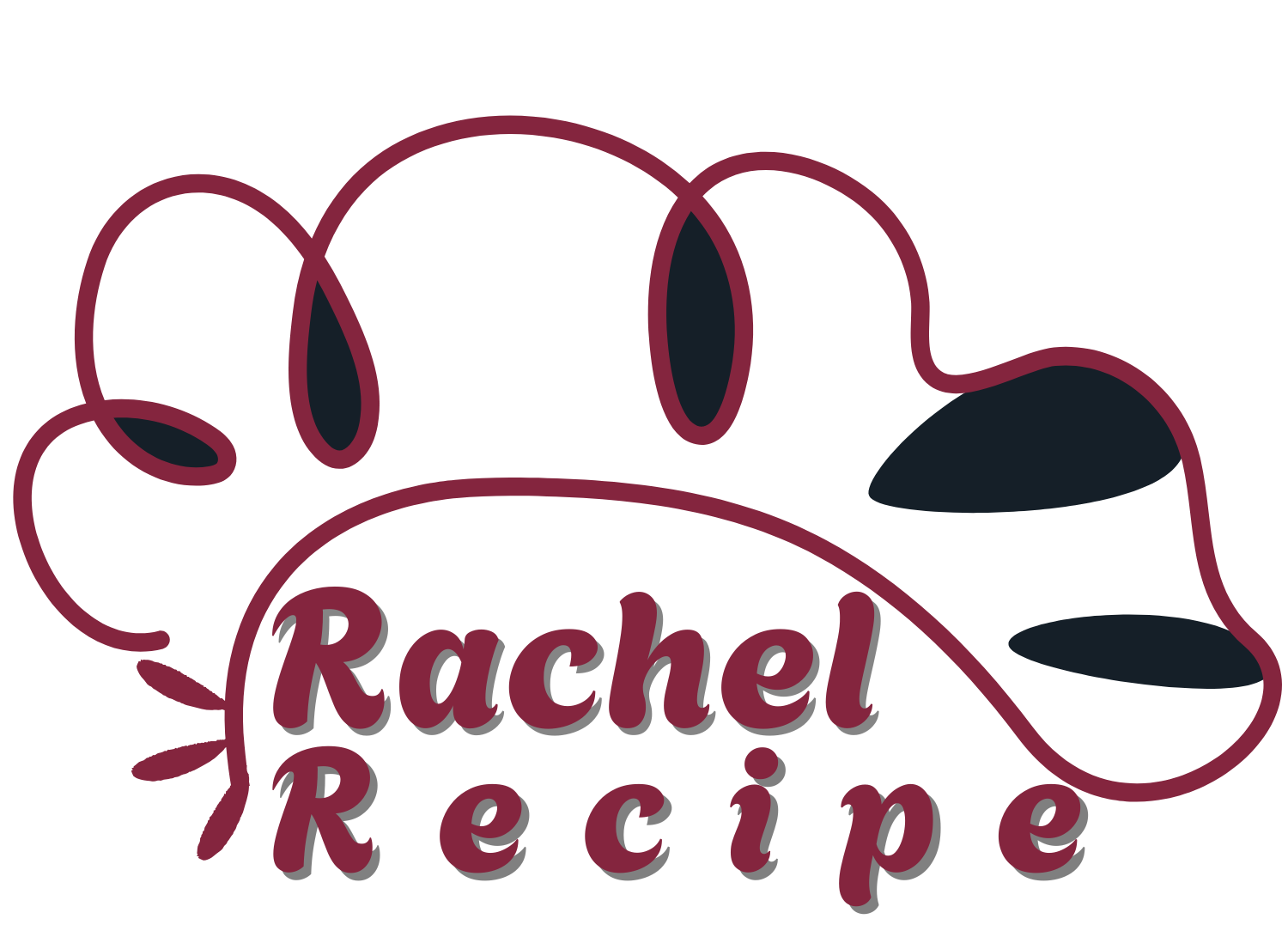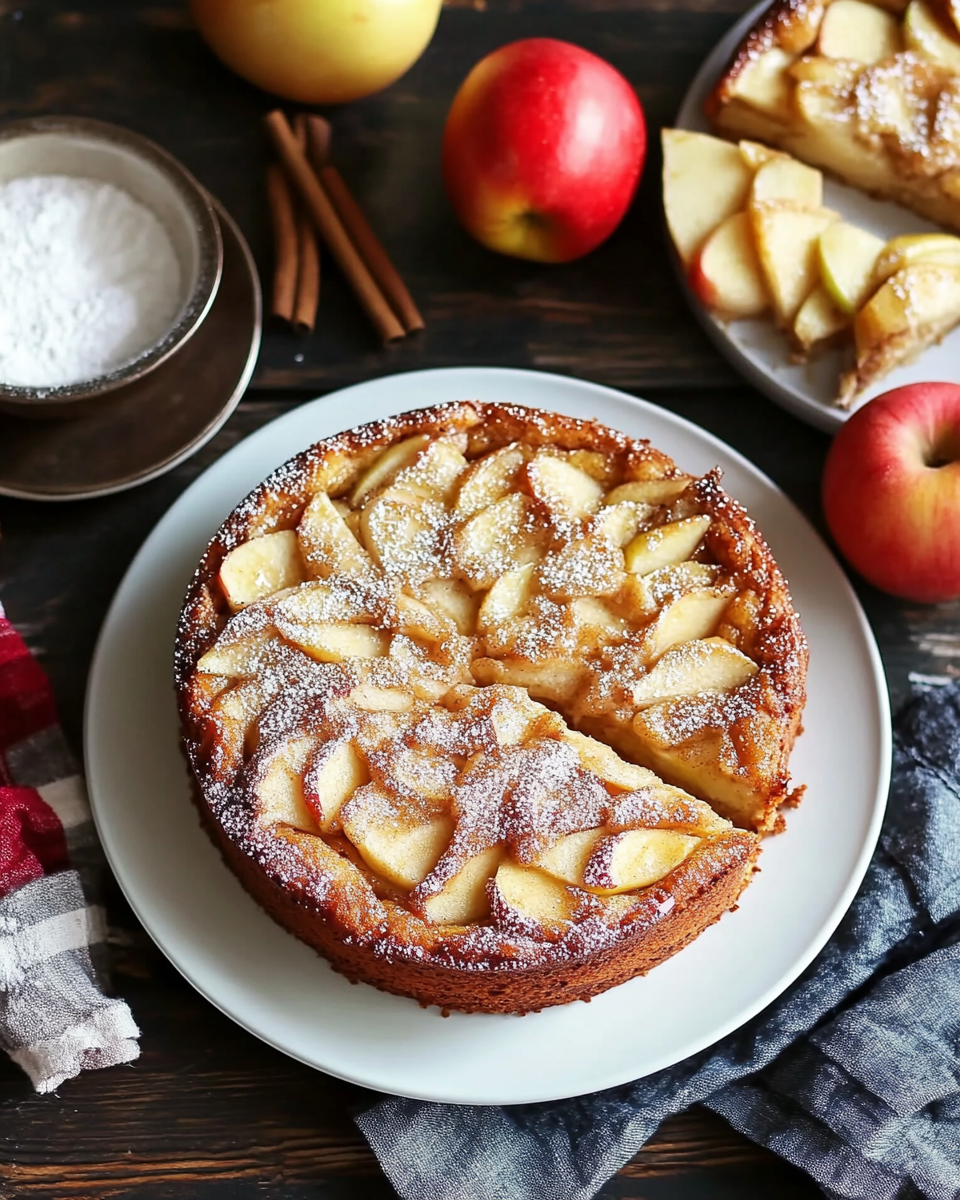The German Apple Cake is a beloved classic that evokes warmth, family tradition, and the cozy aromas of cinnamon and baked apples. Its simplicity is its charm: no need for frosting or elaborate decorations—just the golden glow of baked apples layered into a soft vanilla-scented sponge. This cake is perfect for any time of year, but it truly shines during cooler months when you’re craving a comforting dessert with old-world flair.
Whether served slightly warm with a scoop of vanilla ice cream, or enjoyed cold with a steaming cup of black coffee, this rustic Bavarian cake delivers nostalgic satisfaction in every bite. It’s ideal for casual get-togethers, afternoon tea, or as a sweet finish to a hearty meal. Made with pantry staples and fresh apples, it’s a recipe that’s easy to love and even easier to make again and again.
Full Recipe:
-
1 cup sugar
-
1/2 cup butter, softened
-
2 eggs
-
2 teaspoons vanilla extract
-
1 1/2 cups all-purpose flour
-
1 3/4 teaspoons baking powder
-
1/2 teaspoon salt
-
2 medium apples, peeled and sliced thin
-
1/2 teaspoon cinnamon
-
1 tablespoon sugar (for topping)
Directions:
-
Preheat oven to 350°F (175°C). Grease and flour a 9-inch round cake pan or springform pan.
-
In a mixing bowl, cream the butter and sugar until light and fluffy.
-
Beat in eggs, one at a time, then stir in vanilla extract.
-
In a separate bowl, whisk together flour, baking powder, and salt. Gradually add to the creamed mixture and mix until smooth.
-
Spread the batter into the prepared pan. Arrange the sliced apples over the top of the batter.
-
Combine cinnamon and the remaining tablespoon of sugar and sprinkle over apples.
-
Bake for 35 to 40 minutes or until a toothpick inserted into the center comes out clean.
-
Cool in the pan for 10 minutes, then remove to a wire rack to cool completely.
-
Serve as is, or dust with powdered sugar before serving for an extra touch.
Prep Time: 15 minutes | Cooking Time: 40 minutes | Total Time: 55 minutes
Kcal: 280 kcal | Servings: 8 servings
A Deep Dive Into the Classic German Apple Cake
German Apple Cake, or “Apfelkuchen” in its native tongue, is a time-honored dessert that beautifully captures the essence of traditional European baking. Moist, rich, and filled with tender apple slices that melt into the soft crumb, this cake is beloved not only in Germany but around the world. Often made with pantry staples and seasonal fruit, its simplicity allows the natural sweetness of apples and warmth of cinnamon to shine. Whether you’re preparing it for a casual afternoon tea or serving it as a comforting dessert after a hearty meal, this rustic treat always hits the right note.
Historical Roots and Cultural Significance
The origins of Apfelkuchen trace back centuries, rooted deeply in German and Central European food culture. Apples have long been a staple in Germany due to the country’s favorable climate for apple orchards. As a result, traditional German baking often revolves around this humble fruit. The cake’s simplicity and rustic appeal reflect the practicality and frugality common in historical German households, where nothing went to waste, especially seasonal produce.
This cake also embodies the heart of family traditions. Many Germans have fond memories of grandmothers baking Apfelkuchen on Sundays, holidays, or whenever guests were expected. It’s a symbol of hospitality, love, and togetherness—an edible heirloom passed from one generation to the next. In some regions, the cake includes a yeast base; in others, it features a buttery sponge or even a shortcrust pastry foundation. While techniques may vary, the spirit remains the same.
Why This Cake Stands Out
What sets German Apple Cake apart from other apple desserts like pies or tarts is its texture and balance. Rather than encasing apples in a crust, this cake allows the fruit to mingle directly with the batter. The apples are sliced and gently pressed into the top before baking, where they sink slightly into the soft crumb, becoming tender and juicy while still maintaining their form. As it bakes, the apples caramelize slightly with the sugar and cinnamon topping, creating a subtly sweet crust and an aromatic, golden finish.
Another feature that stands out is its ability to taste even better the next day. This cake matures beautifully overnight, with flavors deepening and the crumb becoming more moist. It’s ideal for making ahead, and many say the second slice is always better than the first.
Perfect for All Occasions
One of the greatest strengths of German Apple Cake is its versatility. It’s a dessert that fits seamlessly into a variety of settings. Serve it as a coffee cake for breakfast or brunch, a snack during afternoon tea, or a comforting treat at the end of dinner. It’s not overly sweet, which makes it palatable for a wide audience, and it pairs excellently with whipped cream, vanilla ice cream, or a dusting of powdered sugar.
Its rustic charm also makes it a hit at potlucks and gatherings. With no need for complicated decorations or fancy techniques, this cake is naturally beautiful in its simplicity. The fanned-out apple slices on top create a visual appeal that’s both inviting and elegant without requiring any special skills.
Healthier Indulgence Compared to Rich Desserts
Although it’s still a dessert, German Apple Cake is often considered a lighter, more wholesome option compared to frosted layer cakes or creamy pastries. The use of fresh fruit as the main feature adds natural sweetness and nutrients, such as fiber and vitamin C. In many variations, there’s less sugar and fat, especially if oil or yogurt is used in place of butter.
Homemakers and bakers who are conscious about what they serve their families often appreciate this recipe for its balance between indulgence and nutrition. Some modern versions even incorporate whole wheat flour or almond flour for a boost in protein and fiber without sacrificing flavor.
Seasonal and Sustainable
German Apple Cake celebrates seasonal eating in the best way possible. In autumn, when apples are abundant, this cake is the perfect way to use up freshly picked fruit. You can choose from a variety of apple types—tart Granny Smiths, sweet Fujis, or aromatic Golden Delicious—to create slightly different flavor profiles.
By using local and seasonal ingredients, you’re not only enhancing the flavor of the cake but also supporting sustainable eating practices. Reducing your carbon footprint through seasonal cooking is something many home cooks and eco-conscious consumers are becoming more mindful of, and this cake fits beautifully into that philosophy.
Adapting to Modern Lifestyles
One of the reasons for the cake’s enduring popularity is how adaptable it is. Over the years, home bakers have found ways to modify the traditional German Apple Cake to suit different dietary needs. It can be made gluten-free with alternative flours or dairy-free by substituting plant-based milk and butter. Some even reduce the sugar content or use natural sweeteners like maple syrup or honey.
It’s also forgiving in terms of technique. This is a cake that welcomes both beginners and seasoned bakers. Even if you don’t get the apple arrangement perfect or your oven temperature fluctuates slightly, you’ll still end up with a delicious result.
Flavors That Evolve With Time
Another beloved quality of German Apple Cake is how its flavors evolve over time. Fresh from the oven, it’s warm, tender, and infused with the fragrance of vanilla and cinnamon. As it sits overnight, the moisture from the apples seeps into the cake, intensifying the flavor and texture. Many find that it’s even more delicious on the second or third day, making it perfect for meal prepping or serving over the course of a few days.
The cake also freezes well. You can wrap individual slices or the whole cake (once cooled) in plastic wrap and store it in the freezer for up to three months. When you’re ready to enjoy it again, simply let it thaw at room temperature or warm it slightly in the oven for that freshly-baked effect.
Tips for Making It Even Better
To get the best out of your German Apple Cake, consider these expert tips:
-
Use a mix of apple varieties for a more complex flavor—combining tart and sweet apples brings depth.
-
Add a splash of lemon juice to the apples before layering to prevent browning and add a bit of brightness.
-
Let the cake cool completely before cutting, as this allows the structure to firm up and flavors to settle.
-
Try adding nuts like sliced almonds or chopped walnuts for a bit of crunch and a rustic feel.
-
Spice it up—beyond cinnamon, a pinch of nutmeg or cardamom can elevate the flavor.
A Timeless Dessert for Every Kitchen
German Apple Cake is more than just a recipe; it’s a reflection of home, heritage, and the joy of baking from scratch. Its minimalism is deceptive—it doesn’t need elaborate toppings, fillings, or frostings to impress. Each bite delivers comfort, character, and a taste of old-world charm. Whether you’re baking it for the first time or returning to a family favorite, this cake has a way of bringing people together.
In a world filled with modern, overly processed desserts, the German Apple Cake stands as a reminder that sometimes the best recipes are the simplest ones. All you need is a few good apples, a warm oven, and a love for honest food.
Conclusion
German Apple Cake remains a beloved staple for good reason. Its rustic appearance and wholesome ingredients speak to generations of home bakers who value simplicity, seasonality, and flavor. Easy to prepare, endlessly adaptable, and perfect for any occasion, it’s a recipe that every baker should have in their repertoire.
Whether you’re serving it at a brunch table, tucking it into a lunchbox, or offering it as dessert after a family dinner, this cake fits the moment with grace. More than just a dessert, it’s a slice of tradition, a nod to heritage, and a celebration of humble ingredients made extraordinary through time-tested technique.






